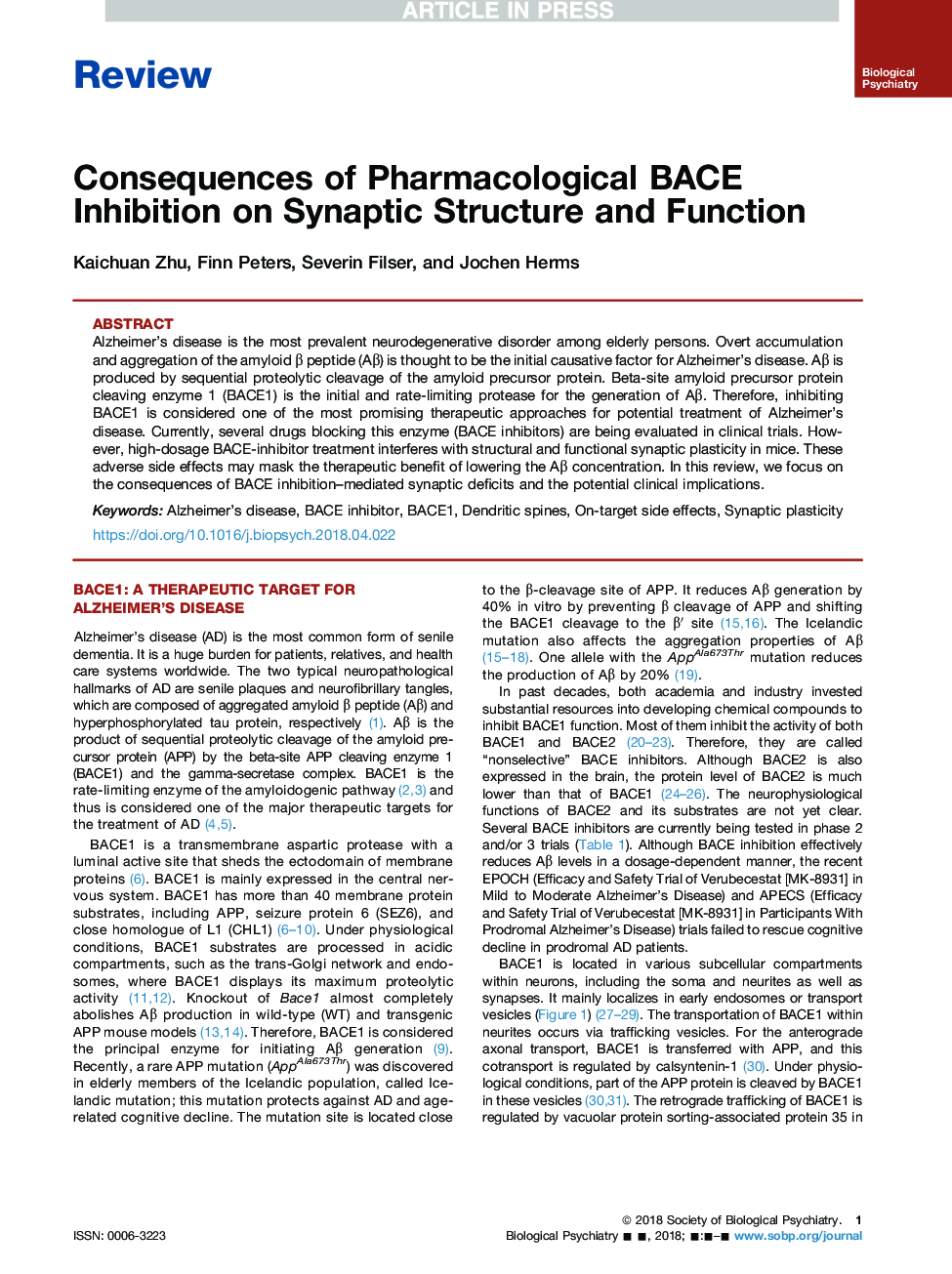| Article ID | Journal | Published Year | Pages | File Type |
|---|---|---|---|---|
| 8959030 | Biological Psychiatry | 2018 | 10 Pages |
Abstract
Alzheimer's disease is the most prevalent neurodegenerative disorder among elderly persons. Overt accumulation and aggregation of the amyloid-β peptide (Aβ) is thought to be the initial causative factor for Alzheimer's disease. Aβ is produced by sequential proteolytic cleavage of the amyloid precursor protein. Beta-site amyloid precursor protein cleaving enzyme 1 (BACE1) is the initial and rate-limiting protease for the generation of Aβ. Therefore, inhibiting BACE1 is considered one of the most promising therapeutic approaches for potential treatment of Alzheimer's disease. Currently, several drugs blocking this enzyme (BACE inhibitors) are being evaluated in clinical trials. However, high-dosage BACE-inhibitor treatment interferes with structural and functional synaptic plasticity in mice. These adverse side effects may mask the therapeutic benefit of lowering the Aβ concentration. In this review, we focus on the consequences of BACE inhibition-mediated synaptic deficits and the potential clinical implications.
Related Topics
Life Sciences
Neuroscience
Biological Psychiatry
Authors
Kaichuan Zhu, Finn Peters, Severin Filser, Jochen Herms,
